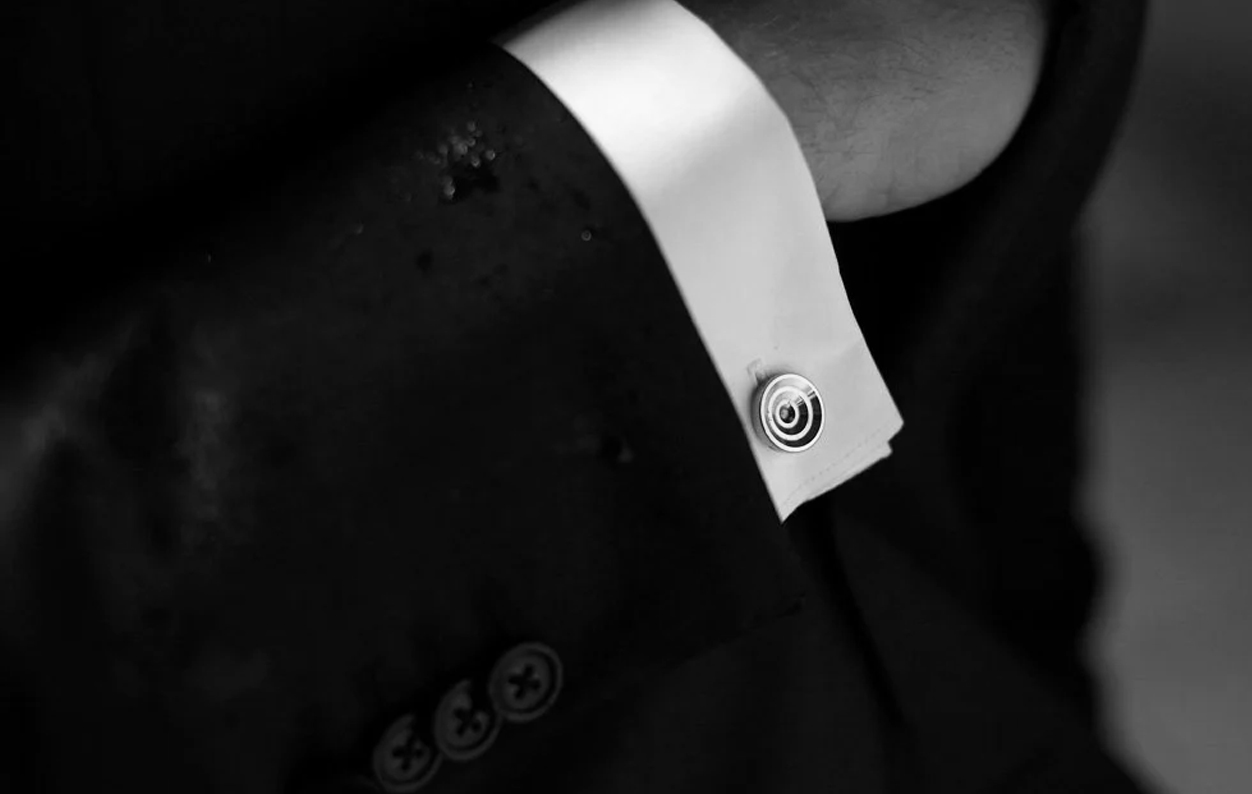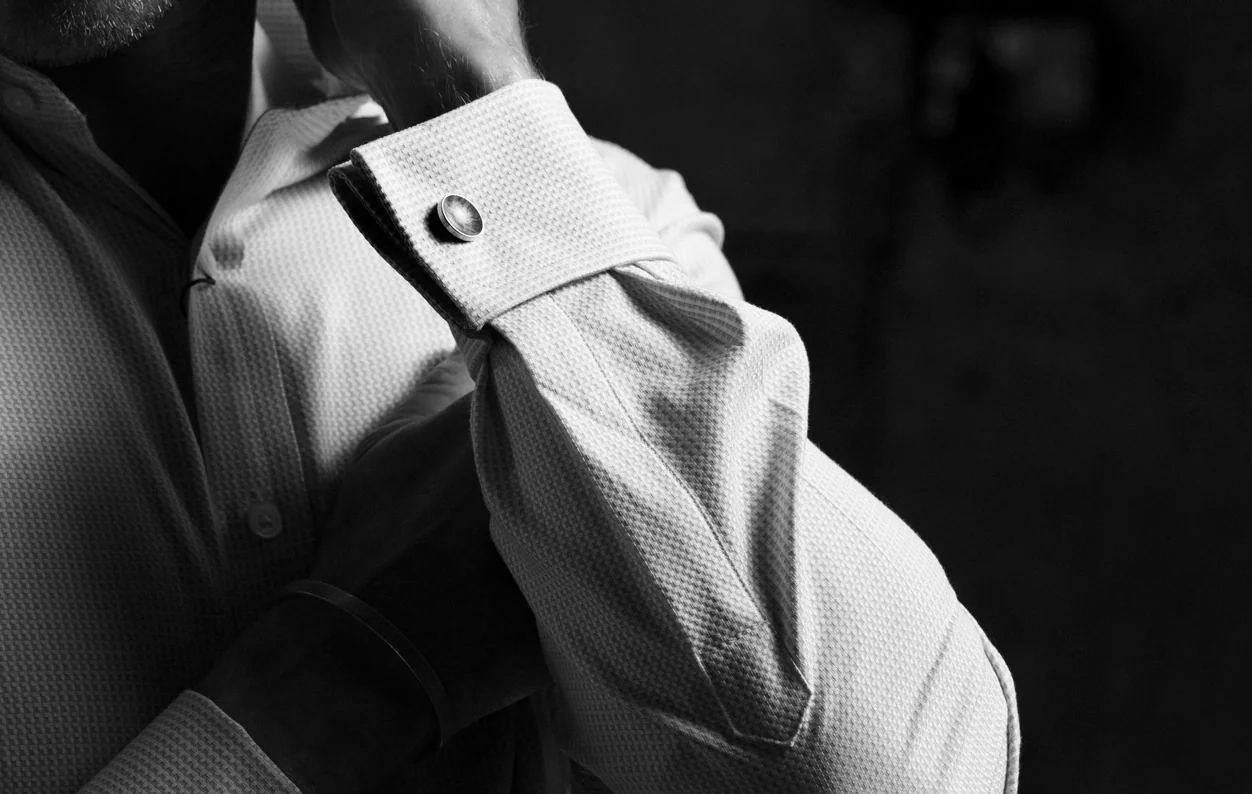Cufflinks are the unsung heroes of formal fashion. These tiny yet powerful accessories can elevate a suit from merely acceptable to absolutely unforgettable. In this guide, we’ll dive deep into the art of accessorizing with cufflinks for formal events, helping you make a confident and stylish impression.
The Importance of Cufflinks for Formal Events
Cufflinks are more than functional—they’re a symbol of sophistication. Designed to fasten the cuffs of a dress shirt, they exude elegance while showcasing personal style. Whether you’re attending a wedding, black-tie gala, or corporate banquet, the right cufflinks act as the cherry on top of your polished ensemble.
Unlike standard buttons, cufflinks offer endless design possibilities, allowing you to add subtle flair or make bold statements. A well-chosen pair will seamlessly complement your suit, creating an impression of thoughtfulness and attention to detail.
Choosing the Right Cufflinks for Formal Events
When selecting cufflinks for a formal event, the key is balance: harmonizing your personal style with the tone of the occasion.
Consider the Event’s Formality
- Black Tie Events: Opt for classic styles like silver or gold cufflinks with minimalistic designs.
- White Tie Events: Stick to ultra-formal choices such as mother-of-pearl or platinum cufflinks.
- Weddings: Experiment with designs that reflect the theme or incorporate subtle pops of color.
Match the Metal to Your Accessories
Pair your cufflinks with the metals in your watch, tie clip, or belt buckle. This creates a cohesive and polished look.
Choose the Right Finish
High-shine metals like silver or gold exude elegance, while matte finishes provide understated sophistication.
Cufflink Styles for Every Formal Occasion
Classic Cufflinks
These timeless pieces often feature simple designs and high-quality materials. They’re versatile, making them a safe choice for nearly all formal events.
Novelty Cufflinks
If the event’s vibe is playful or personal, novelty cufflinks featuring quirky designs—like hobbies or initials—can showcase your personality.
Silk Knot Cufflinks
Perfect for less formal occasions, silk knot cufflinks are colorful, lightweight, and easy to match with ties or pocket squares.
Custom Engraved Cufflinks
Engraving your cufflinks with initials, dates, or symbols adds sentimental value, making them perfect for weddings or anniversaries.
How to Style Cufflinks with Your Formal Wear
Pairing with Shirts
- French Cuff Shirts: These are the go-to choice for cufflinks. Their double cuffs fold back, offering the perfect space for cufflink insertion.
- Barrel Cuff Shirts: While less common, these can still accommodate some cufflink styles, offering a unique twist.
Complementing Colors
Match cufflink colors with your tie, pocket square, or shirt details. For example, blue enamel cufflinks can pair beautifully with a navy tie.
Subtle Coordination
Avoid overpowering your outfit. If your suit has bold patterns or textures, stick to understated cufflinks to maintain balance.
How to Wear Cufflinks Like a Pro
- Insert Them Correctly: Always slide cufflinks through the buttonholes of both cuffs. The decorative face should face outward.
- Align Your Shirt Cuffs: Ensure your shirt cuffs peek out just slightly from under your jacket sleeves—typically by about half an inch.
- Double-Check Security: Make sure the cufflinks are firmly fastened to avoid accidental slippage during the event.
Maintaining and Storing Your Cufflinks
Proper care prolongs the life of your cufflinks, ensuring they stay pristine for years.
- Cleaning: Use a soft cloth to gently remove fingerprints or dirt. For intricate designs, a jewelry cleaning solution works wonders.
- Storage: Store cufflinks in a padded box or velvet pouch to prevent scratches and tarnishing.
Why Cufflinks are the Perfect Gift for Formal Events
Cufflinks are not just accessories—they’re meaningful tokens of appreciation. Personalized designs make excellent gifts for groomsmen, colleagues, or loved ones. Moreover, they’re versatile, ensuring the recipient can treasure and use them for various formal occasions.
FAQs
What types of shirts require cufflinks?
Shirts with French cuffs or convertible cuffs are specifically designed for cufflinks, offering the perfect opportunity to wear them stylishly.
Are cufflinks suitable for casual occasions?
Yes, but the design should match the event’s tone. Casual cufflinks, like silk knots, are better suited for semi-formal or casual settings.
How do I match cufflinks with a watch?
Pair the cufflink material with your watch’s metal (e.g., silver cufflinks with a silver watch) for a cohesive look.
Can cufflinks be worn with all suit styles?
Absolutely! However, they pair best with tailored suits and formal attire, especially for black-tie or white-tie events.
What are the most popular cufflink materials?
Silver, gold, platinum, and mother-of-pearl are classic choices for formal occasions, while stainless steel and silk are popular for casual events.
Are engraved cufflinks worth it?
Yes! Engraved cufflinks add a personal touch, making them ideal for sentimental gifts or special occasions like weddings.
Conclusion
Mastering the art of accessorizing with cufflinks for formal events is a subtle yet impactful way to elevate your style. Whether you opt for timeless classics or bold designs, the right cufflinks can help you stand out while exuding confidence and elegance. By following these tips and tricks, you’ll ensure that your cufflink game is always on point.


